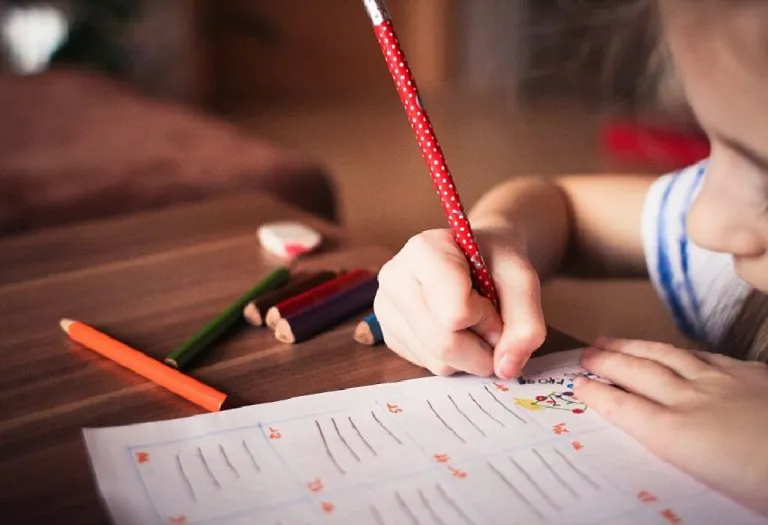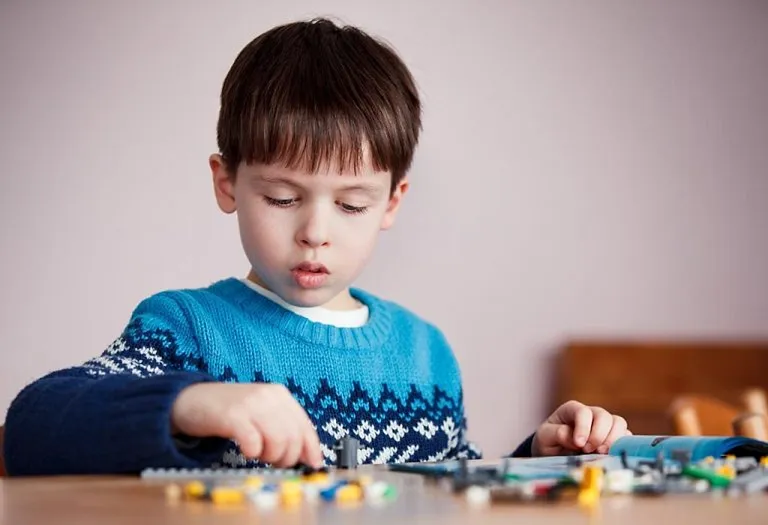How to Determine if Child Is Left or Right-Handed?
How can you tell if your child is left or right-handed? Determining whether a child is left or right-handed is a fascinating aspect of human development that has intrigued scientists, parents, and educators for generations. Moms, do you know that you cannot teach your little one to be right-handed or left-handed? In fact, training handedness is highly discouraged as it’s against kids’ natural brain development. ‘Handedness’ comes automatically to children, and left-handedness is common.
While handedness may seem simple, it can have profound implications on a child’s learning, behaviour, and overall development (3). You’ll notice specific symptoms in your little one from early childhood. Look out for these signs and confirm if she is another left-handed Picasso.
When Will You Know if Your Child Is Left or Right-Handed?
Children typically start to prefer using one hand over the other between the ages of 1 and 2. By age 3, most children have established a clear preference for either their left or right hand (1). However, it’s important to note that hand dominance can sometimes take longer to develop fully, and some children may switch between hands during their early years before settling on one. If you’re curious about your child’s hand preference, you can observe which hand they use more frequently for activities such as reaching, grabbing, drawing, and eating.
Signs of Left or Right-Handedness in Babies
As babies develop, they often exhibit signs of left or right-handedness, indicating a preference for one hand over the other. These early indications can provide insights into their future handedness.
1. Hand Preference in Reaching
Notice which hand your baby prefers to use when reaching for objects. Consistently reaching with one hand over the other may indicate emerging hand dominance.
2. Grasping Objects
Observe which hand your baby uses to grasp toys or other objects. A recurrent preference for one hand during grasping activities can signify the beginning of hand dominance.
3. Self-Feeding
Pay attention to which hand your baby prefers to use when feeding themselves. Whether they favour their left or right hand while holding a spoon or grasping food can hint at their developing handedness.
4. Thumb Sucking Preference
Note which thumb your baby prefers to suck on for comfort. Although not a definitive indicator, a consistent preference for one thumb over the other may reflect their emerging hand dominance.
How to Confirm if Your Child Is Left or Right-Handed?
While early signs may suggest your child’s dominant hand preference, confirming whether they are left- or right-handed requires more deliberate observation and assessment. Here are several methods to help you definitively determine your child’s handedness.
1. She Chooses Her Left Hand to Be the Dominant Hand
Encourage hand development in your little one by occupying her with various hand-specific activities such as play dough, crayon painting, playing with balls, etc. Just keep these objects in front and observe her natural hand preference. Even though she is three and still uses her left hand, don’t try to change her.
2. You’re Left-Handed Too
Hand dominance in children has a lot to do with genetics (2). If you or your hubby are left-handed, chances are high that your kiddo will also be lefty. Did you know that the brain of lefties has ‘mixed dominance’? This enables them to perform different activities using both their hands. Left-handers have enhanced visual skills, too. So, if there’s anyone in your immediate family who is a lefty, look out for signs of “mixed” handedness in your child, too.
3. Hand-Swapping
Have you ever noticed your little one changing her hands often? Children might start an activity with one hand and then swap after some time. If this is the case with your preschooler, try to find which hand she usually begins with. You must help your child build up endurance in her preferred hands by developing her fine motor skills effectively.
4. Midline Crossing Activities
Many times, your little one tends to pick what is placed to her left with her left hand and use her right hand to pick what’s placed to her right. If this is the case with your child, try placing objects like crayons, spoons, etc., near her belly button (midline) (5). If she repeatedly uses her left hand to pick them up, then she is most likely to be a lefty.
5. Throwing and Catching
Pay attention to which hand your child uses to throw and catch objects. Their dominant hand will usually be the one they use for these activities.
6. Hand-Eye Coordination Tasks
Engage your child in activities that require hand-eye coordination, such as threading beads onto a string or playing with building blocks. Observe which hand they use to perform these tasks.
7. Leg Activity
Observe your child’s leg activity during tasks such as kicking a ball or stepping up onto a curb. Does she prefer kicking with her left leg more? Or, does she feel more secure standing on her left leg? These symptoms are sure-shot indicators of left-handedness.
8. Other Signs of Right or Left-Handedness in Children
Give your little one a spoon to eat with or a pencil to write with. Observe which hand she is using for eating or writing. If it’s the left hand all the time, then it’s confirmed that she is left-handed.
FAQs
1. Can a child’s handedness change over time?
While uncommon, some children may switch their dominant hand during their early years. However, handedness typically stabilises by around 3 to 4 years old. If you notice any significant changes, it’s advisable to consult with a doctor for guidance.
2. How does handedness development affect learning and cognitive abilities?
Handedness development is linked to brain lateralisation (4), which can influence cognitive functions. However, being left or right-handed doesn’t inherently determine intelligence or learning abilities.
3. Can ambidexterity be a possibility for my child?
Ambidexterity, the ability to use both hands equally well, is rare but possible. While some individuals naturally develop ambidextrous skills, it’s important to note that true ambidexterity is uncommon and may not be achievable for everyone.
While it’s okay for parents to be observant of their kid’s use of hands, it’s not right to influence their hand preference. By doing so, they would only confuse their kids further.
References/Resources:
1. Is My Child Right or Left-Handed?; Primarily Learning; https://primarilylearning.org/right-or-left-handed/; July 2021
2. Patel. A; How likely is it for right handed parents to have left handed children?; The Tech Interactive; https://www.thetech.org/ask-a-geneticist/articles/2023/inheriting-left-or-right-handedness/; June 2023
3. Johnston. D. W, Nicholls. M. E, Shah. M, Shields. M. A; Nature’s experiment? Handedness and early childhood development; PubMed Central; https://www.ncbi.nlm.nih.gov/pmc/articles/PMC2831280/; May 2009
4. Li. M, Chen. H, Wang. J, Liu. F, et al.; Handedness- and hemisphere-related differences in small-world brain networks: a diffusion tensor imaging tractography study; PubMed Central; https://www.ncbi.nlm.nih.gov/pmc/articles/PMC3961786/; March 2014
5. How do you know if your child is left or right-handed?; BBC; https://www.bbc.co.uk/tiny-happy-people/amazing-toddlers-little-hands/z7bb382
Also Read:
Hand Preference in Children
Early Hand Preference in Toddlers
Raising Left-Handed Child in Right-Handed World
Was This Article Helpful?
Parenting is a huge responsibility, for you as a caregiver, but also for us as a parenting content platform. We understand that and take our responsibility of creating credible content seriously. FirstCry Parenting articles are written and published only after extensive research using factually sound references to deliver quality content that is accurate, validated by experts, and completely reliable. To understand how we go about creating content that is credible, read our editorial policy here.






















